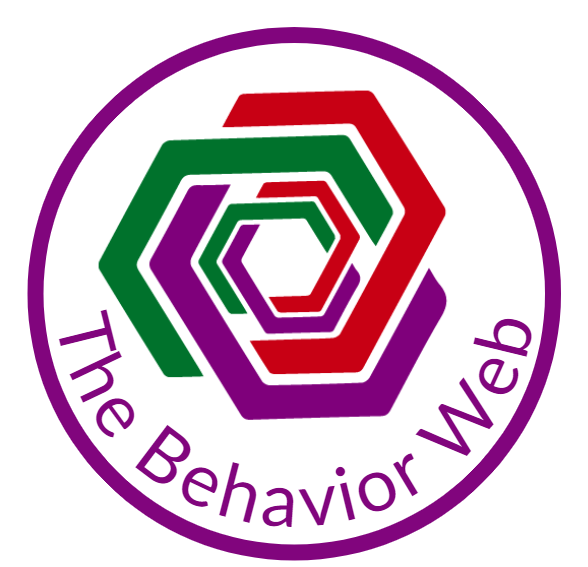
By: Cory Cannady, MEd, BCBA, LBA, DBH Student
LGBTQ Community Health
The health and mental health of lesbian, gay, transgender, and queer/questioning (LGBTQ) populations is affected by multiple factors, many of which being unique to this population. The number of LGBTQ persons in America is found to be between 2-3% of the total population (Romanelli & Hudson, 2017); however, this population remains underserved or ill served by the healthcare industry (Romanelli & Hudson, 2017). The causes for these health disparities are numerous and ever changing as research delves deeper into specific health concerns and causality.
Access to physical and mental health requires opportunities to seek out and reach needed services and to be offered appropriate care when provided (Romanelli & Hudson, 2017). LGBTQ persons already accessing primary or mental health services come upon specific and unique barriers to quality care compared to the care received by the heterosexual cisgender population even though they are more likely to seek treatment (Williams & Fish, 2020). These include both individual and system-level barriers, both having effects on LGBTQ health outcomes.
Mental Health Among LGBTQ Populations
Metal health among LGBTQ populations often go hand-in-hand with physical health and health outcomes; therefore, an overview of mental health issues is in order. The LGBTQ population is riddled with unique societal and personal stressors that contribute to their overall mental health. Some of the most prevalent stressors include social stigma, prejudice, discrimination, victimization, homophobia, internalized homophobia, family dynamics, and denial of civil rights (Fulginiti et al., 2021; Whaibeh, 2019; Yolaç &Meriç, 2020).
These influences often cause members of the LGBTQ community to develop mental health problems at a high rate. The most common mental health conditions seen among the population include depression, anxiety, post-traumatic stress disorder (PTSD), substance use disorders, job discrimination, and alcohol use as well as feelings of helplessness (Macbeth et al., 2021; Whaibeh, 2019; Yolaç &Meriç, 2020). Each of these mental health conditions are represented among the LGBTQ population at higher rates than their heterosexual cisgender peers. These mental health conditions also often correlate with general poor health outcomes.
Physical Health Among LGBTQ Populations
Physical health among the LGBTQ populations can be divided among genders or represented as a whole; however, due to the diversity of the population certain numbers may be an under- or overestimation of physical conditions. Physical conditions range from early predictors of future disease to acquired fatal diseases.
First, members of the LGBTQ community are less likely to have a primary care provider (PCP) (Cigna, 2022). Not having a reliable provider to create a report with can lead to a host of problems when accessing primary care. Even when a PCP has been established LGBTQ persons have reported dissatisfaction with treatment autonomy, equity, and overall clinical outcomes (Whaibeh et al. 2019). Members of the LGBT community have higher rates of HPV infections and are at a higher risk for alcohol, substance, and tobacco use (Cigna, 2022; Shaver et al., 2019).
Women identifying as lesbian or bisexual have higher rates of elevated weight and a decreased likelihood of attending regular yearly pap smears (Shaver et al., 2019). Women identifying as lesbian or bisexual also have higher rates of breast cancer than thier heterosexual, cisgender peers (Cigna, 2022). Regular avoidance of annual checkups puts women identifying as lesbian or bisexual at greater risk of developing undiagnosed diseases and/or diseases caught at later stages of development.
Men who identify as gay or bisexual have higher markers for cardiovascular stress and higher rates of eating disorders proportionally (Shaver et al., 2019). Transgender men also have a higher rate of depression than heterosexual cisgender men or other subcategories within the LGBTQ community (Shaver et al., 2019).
Violence Among LGBTQ Populations
Violence among LGBTQ population members is higher than that of the general population and includes physical and sexual assault, verbal assault, interpersonal trauma, harassment, and bullying (Kassing et al., 2021). Violence at any age can have repercussions on one’s mental and physical health even if the violence happened years in the past. The number of violent cases is highest in rural areas and other areas without specific legislation for LGBTQ protection (Backhaus et al., 2019).
Sexual assault rates are reported as high as 10% within the LGBTQ community with an average of 2% of those identifying as heterosexual (Kassing et al., 2021) and an average of 30% reporting being threatened or physically attacked (Kassing et al., 2021). These types of discriminatory actions are associated with poor mental and physical health outcomes as well as side effects such as decreased energy levels, concentration difficulties, and lower levels of job retention and earning potential (Backhaus et al., 2019).
There are some methods shown to buffer the effects of violence among LGBTQ college students. Those who felt a sense of belonging, group cohesiveness, and community connectedness showed fewer long-term effects from discriminatory violence than those who felt isolated or excluded (Backhaus et al., 2019). This may also be true for those who feel a sense of belonging or community connectedness in other age ranges.
Suicidality in LGBT Populations
Suicidal ideation and attempts are very high in the LGBTQ population compared to heterosexual cisgender peers. Suicide is already the second leading cause of death among youth aged 10-24 (Fulginti et al., 2021), so increased ideation and attempts among this population make them especially vulnerable. Stigma, prejudice, discrimination, and victimization are reported as the leading factors related to LGBTQ suicidality (Fulginti et al., 2021).
In the general population it is estimated that 12% of adolescents contemplate suicide (Russon et al., 2021). It is reported that suicidality among LGBTQ youth are around 1.6-2.63 times that of the general population (Backhaus et al., 2019). The attributed factors for this include parent-adolescent relationship, family rejection of sexuality, negative familial events, and extrafamilial victimization (Russon et al., 2021). The largest disparity between suicidality in the general population and the LGBTQ population is that of actual suicide attempts (Fulginti et al., 2021).
Transgender male adolescents reported the highest rate of suicidality followed by transgender female adolescents (Fulginti et al., 2021). The rate of suicidal ideation and attempts by members of the LGBTQ population is alarming and warrants research for interventions specific to this population.
LGBTQ Health and Family Dynamics
Family dynamics can play a large role in either exacerbating or buffering symptoms associated with mental health disparities for the LGBTQ community. Some of the largest factors attributed to family dynamics and their effect on the LGBTQ community include rejection of one’s sexuality, inclusivity, acceptance, and religiosity.
Religiosity is often seen as a protective factor that buffers the effects of everyday life for the general population, but this is not always the case for members of the LGBTQ community (Macbeth et al., 2021). Religiosity may be one of the main variables attributed to familial acceptance or exclusion of family members based on sexual orientation. Therefore, it is reasonable to look at it as a marker of future mental health outcomes for LGBTQ members.
Religiosity is seen as the degree to which an individual, or family, hold religious beliefs (Macbeth et al., 2021). Traditionally religiosity has led to members of the LGBTQ community felling excluded and unwelcome as homosexuality has historically been prohibited (Dyer, J.,2021). A family’s religiosity, therefore, can indicate problems among family members’ acceptance of non-heterosexual orientations. Rejection by family members has been associated with increased suicide attempts and higher rates of anxiety and depression (Macbeth et al., 2021).
Barriers to Accessing Quality Care
The barriers to accessing quality care are numerous among the LGBTQ community and are attributed to both individual and systematic barriers. The main barriers include discrimination, poor treatment, insensitivity, geographical availability, appropriateness of service, and competence among providers (Romanelli & Hudson, 2017). Other barriers include lack of self-advocacy, embarrassment, and false expectations by the individual care-seeker (Romanelli & Hudson, 2017).
Often, LGBTQ members believe providers hold negative predispositions toward them, lack competency in their unique care, and are overall less satisfied with treatment (Williams & Fish, 2020). Although some of these may be misconceptions by the care-seeker the reality is that it is enough for them to either delay care or forfeit care altogether. A universal system for teaching LGBTQ care is needed in medical programs.
Some recent suggestions to increase care quality among providers is the idea of culturally responsive care as well as care via telemedicine. Currently 1 in 6 adults is lives with a mental illness, and this number is higher for the LGBTQ population (Waihbeh et al., 2019). Telehealth seems to be a major advantage in meeting the needs of mental and physical care for all populations across geographical and socioeconomic status (Waibeh et al., 2019). Although promising, more needs to be done to meet the unique needs of the LGBTQ population.
Conclusion
The LGBTQ population makes up a large community who have trouble accessing quality physical and mental health services. Much of the problem regarding access has to do with societal discrimination and/or perceptions of such. Little research has been done to identify specific, effective interventions within the LGBTQ populations for both mental and physical health even though these members of the community are at a much higher risk for certain mental and physical health conditions.
Universal teaching practices as well as on-site training specific of the population in the geographic area is warranted and necessary. To provide the best available care for the LGBTQ community, members of the community and providers should tailor care to meet the needs of this population and self-advocacy skills should be taught regarding one’s own health. A multi-faceted approach should be taken to ensure the health and wellbeing of the LGBTQ population. Research should continue to delve into appropriate care interventions for both mental and physical health of the LGBTQ population as well as how to reduce stress factors and societal barriers to appropriate care.
References:
Backhaus, I., Lipson, S., Fisher, L., Kawachi, I., & Padrelli, P. (2021). Sexual assault, sense of belonging, depression and suicidality among LGBQ and heterosexual college students. Journal of American College Health, 69(4), 404-412. https://doi.org/10.1080/07448481.2019.1679155
Cinga. (2022). LQBTQ+ health disparities. Retrieved from https://www.cigna.com/knowledge-center/lgbtdisparities#:~:text=LGBTQ%2B%20people%20are%20less%20likely%20to%20have%20a%20regular%20health%20care%20provider.&text=Lesbian%20and%20bisexual%20women%20have,women%20are%20at%20greater%20risk.&text=LGBTQ%2B%20people%20have%20higher%20rates,related%20cervical%20or%20anal%20cancers.
Dyer, Justin. (2021). Refining research on the intersection between sexual orientation, suicide, and religiosity. American Psychological Association, 24(2), 179-188. https://doi.org/10.1037/rel0000451
Fulginiti, A., Rhoades, H., Mamey, M., Klemmer, C., Srivastana, A., Weskamp, G., & Goldbach, J. (2021). Sexual minority stress, mental health symptoms, and suicidality among LGBTQ youth accessing crisis services. Journal of Youth and Adolescents, 2021(50), 893-905. https://doi.org/10.1007/s10964-020-01354-3
Kassing., F., Casanova, T., Griffin, J., Wood, E., & Stepleman, L. (2021). The effects of polyvictimization on mental and physical health outcomes in an LGBTQ sample. Journal of Traumatic Stress, 2021(34), 161-171. https://doi.org/10.1002/jts.22579
Macbeth, A., Vidales, C., & Vogel, D. (2021). Perceived parental religiosity as a predictor of depression and substance use among LGBTQ+ individuals: The mediating role of perceived familial stigma. American Psychological Association, 14(1), 140-147. https://doi.org/10.1037/rel0000411
Romanelli, M. & Hudson, K. (2017). Individual and systematic barriers to health care: Perspectives of lesbian, gay, bisexual, and transgender adults. American Journal of Orthopsychiatry, 87(6),714-728. https://dx.doi.org/10.1037/ort0000306
Russon, J., Morrissey, J., Dellinger, J., Jin, B., & Diamond, G. (2021). Implementing attachment-based family therapy for depressed and suicidal adolescents and young adults in LGBTQ+ services. Crisis. https://doi.org/10.1027/0227-5910/a000821
Shaver, J., Sharma, A., & Stephenson, R. (2019). Rural primary care providers’ experiences and knowledge regarding LGBTQ health in a midwestern state. The Journal of Rural Health, 2019(35), 362-373. https://doi.org/10.1111/jrh.12322
Whaibeh, E., Mahmoud, H., & Vogt, E. (2019). Reducing the treatment gap for LGBT mental health needs: The potential of telepsychiatry. Journal of Behavioral Health Services and Research, 47(3), 424-431. https://doi.org/10.1007/s11414-019-09677-1
Williams, N. & Fish J. (2020). The availability of LGBT-specific mental health and substance abuse treatment in the united states. Health Services Research, 2020(55), 932-943. https://doi.org/10.1111/1475-6773.13559
Yolaç, E. & Meriç, M. (2020). Internalized homophobia and depression levels in LGBT individuals. Perpectives in Psychiatric Care, 2019(57), 304-310. https://doi.org/10.1111/ppc.12564






























